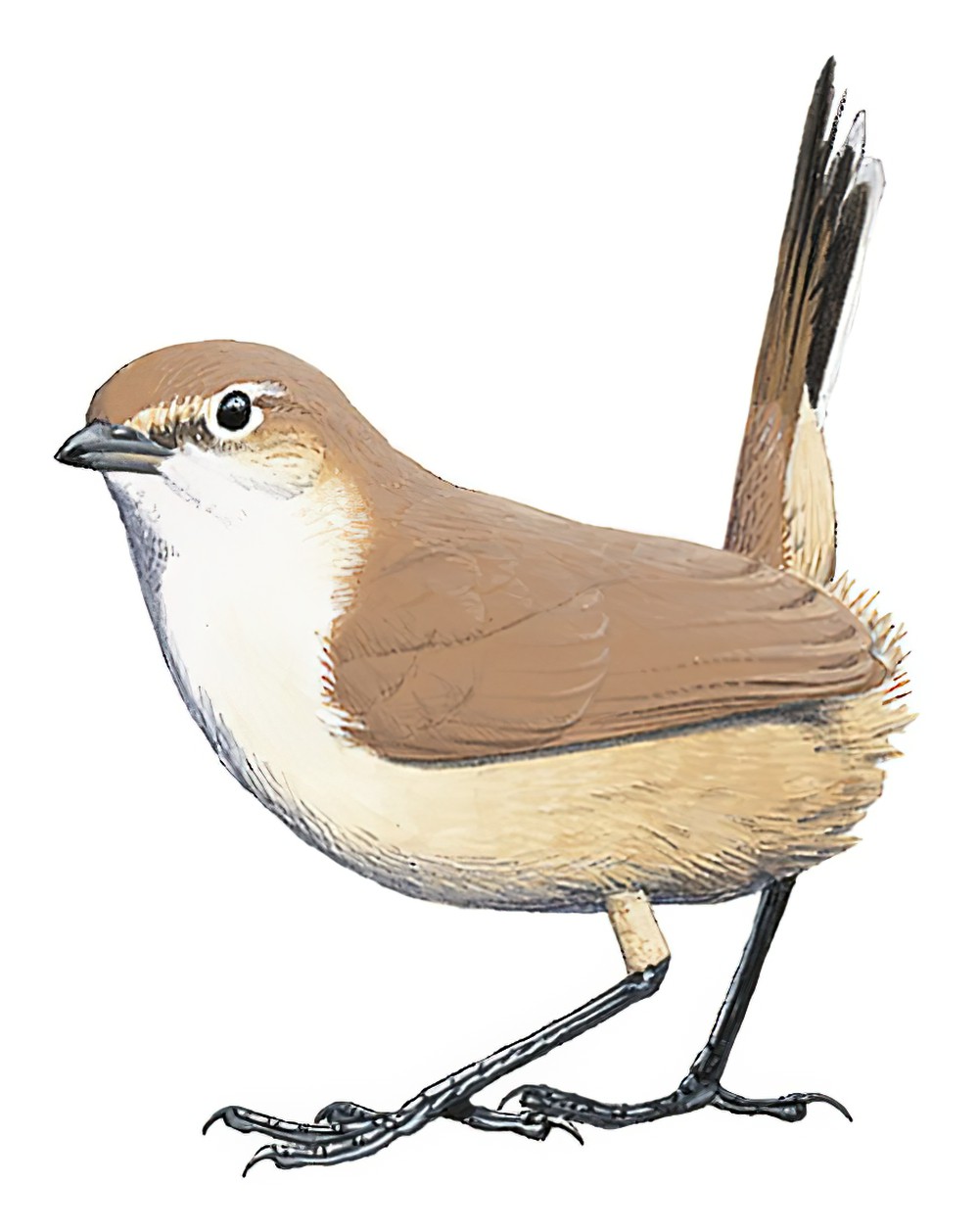Sandy Gallito / Teledromas fuscus

Sandy Gallito
SCI Name:
Protonym: Rhinocrypta fusca Nomen.Av.Neotrop. p.76,161
Taxonomy: Passeriformes / Rhinocryptidae / Teledromas
Taxonomy Code: sangal1
Type Locality: Mendoza, Argentina.
Author: Sclater & Salvin
Publish Year: 1873
IUCN Status: Least Concern
DEFINITIONS
TELEDROMAS
(Rhinocryptidae; Ϯ Sandy Gallito T. fuscus) Gr. τελεος teleos accomplished, perfect (cf. τηλε tēle far off, at a distance); δρομας dromas running < τρεχω trekhō to run (cf. -δρομος -dromos -runner); "Teledromas, gen. nov. Characters.— Similar to Rhinocrypta Gray but head not crested; bill relatively stronger and heavier; under tail-coverts equal to less than half the length of tail; hind toe with claw longer than second toe with claw. Type.— Rhinocrypta fusca Sclater and Salvin ... Though the two species that have been included in the genus Rhinocrypta are related, and have similar habits and habitat, they differ so trenchantly in structural characters that their separation is well warranted." (Wetmore & J. Peters 1922).
fuscus
L. fuscus brown, dusky, dark-coloured, black (see also fusca).
● ex “Merula Philippensis” of Brisson 1760 (syn. Acridotheres tristis).
● ex “Brown Thrush” of Latham 1783, and Pennant 1785 (syn. Catharus swainsoni).
● ex “Alondra parda” of de Azara 1802-1805, no. 147 (Cinclodes).
● ex “Sucrier Namaquois” or “Sucrier à Caleçon Blanc” of Levaillant 1812, pl. 296 (Cinnyris).
● "77. SCOLOPAX. ... fusca. 3. S. rostro arcuato, pedibus rubris, corpore fusco, cauda basi alba. Numenius fuscus. Catesb. car. I. p. 83. t. 83. Habitat in America. Antecedentes 1. 2. 3. structura nimis affines, sed colore corporis diversæ." (Linnaeus 1758) (syn. Eudocimus albus ☼) (see ruber and albus).
● ex “Brown-headed Oriole” of Pennant 1785 (syn. Euphagus carolinus).
● ex “Martin-pêcheur de la côte Malabar” of d’Aubenton 1765-1781, pl. 894 (syn. Halcyon smyrnensis).
● "69. LARUS. ... fuscus. 4. L. albus, dorso fusco. Fn. svec. 126. Habitat in Europa." (Linnaeus 1758) (Larus).
● ex “Brown Merganser” (= ♀) of Pennant 1785 (?syn. Lophodytes cucullatus).
● ex “Mésange Brune à Poitrine Noire” of Levaillant 1804, pl. 139, fig. 1 (syn. Melaniparus afer).
● ex “Brown-headed Oriole” of Pennant 1785 (syn. Molothrus ater).
● (Boddaert 1783) ex “Vautour de Malthe” of d’Aubenton 1765-1781, pl. 427 (= ☼) (syn. Neophron percnopterus).
● (J. Gmelin 1788) ex “Vultur fuscus” of Brisson 1760, “Vautour de Malthe” of d’Aubenton 1765-1781, pl. 427, and de Buffon 1770-1783, and “Avoltojo Griffone” of Cetti 1776 (syn. Neophron percnopterus).
● ex “Brown Pelican” of Latham 1785 (syn. Pelecanus occidentalis).
● ex Tringa lobata Linnaeus, 1758, and “Phalarope cendré” and “Phalarope brun” of Brisson 1760 (syn. Phalaropus lobatus).
● ex “Little Dusky Parrot” of Edwards 1764 (Pionus).
● ex “Merle huppé du cap de bonne Espérance” of d’Aubenton 1765-1781, pl. 563, fig. 1 (syn. Pycnonotus cafer).
● ex “Black-cap Fly-catcher” of Catesby 1731-1743, and Latham 1783, “Muscicapa carolinensis fusca” of Brisson 1760, “Gobe-mouche noirâtre de la Caroline” of de Buffon 1770-1783, and “Black-headed Fly-catcher of Pennant 1785 (syn. Sayornis phoebe).
● ex “Brown Tody” of Latham 1781 (unident.).
UPPERCASE: current genus
Uppercase first letter: generic synonym
● and ● See: generic homonyms
lowercase: species and subspecies
●: early names, variants, mispellings
‡: extinct
†: type species
Gr.: ancient Greek
L.: Latin
<: derived from
syn: synonym of
/: separates historical and modern geographic names
ex: based on
TL: type locality
OD: original diagnosis (genus) or original description (species)












